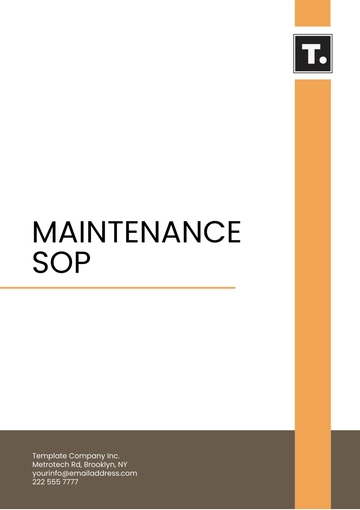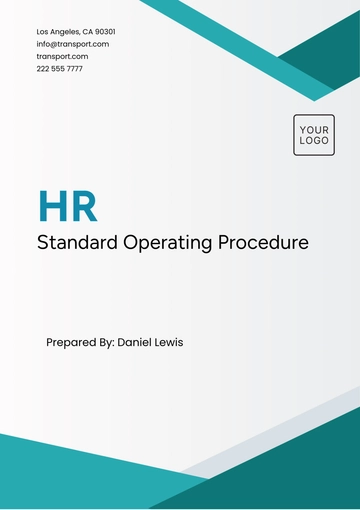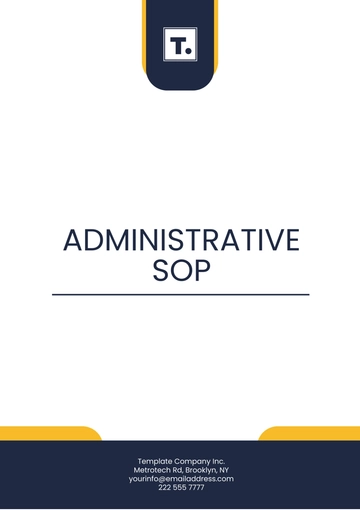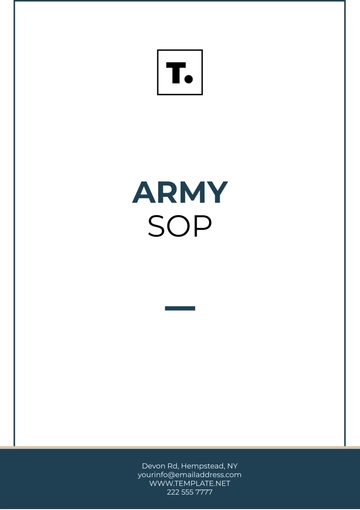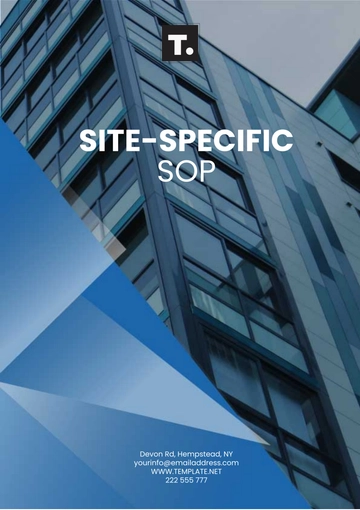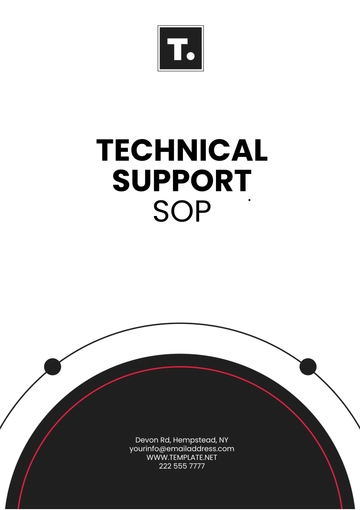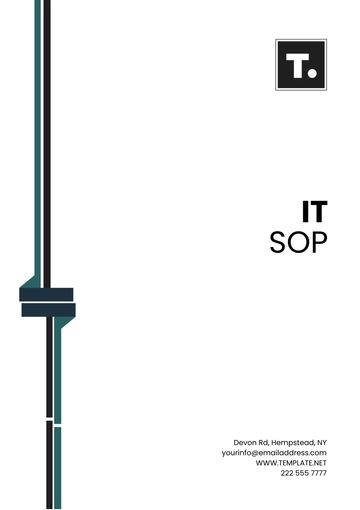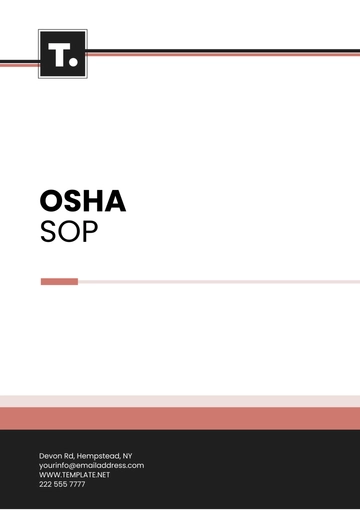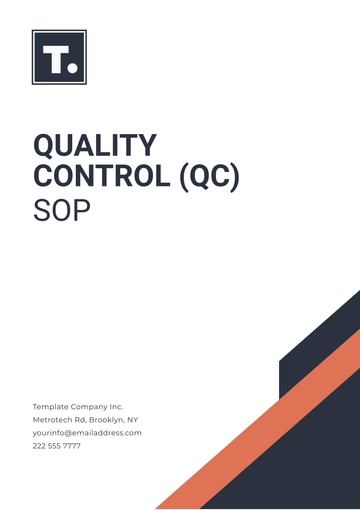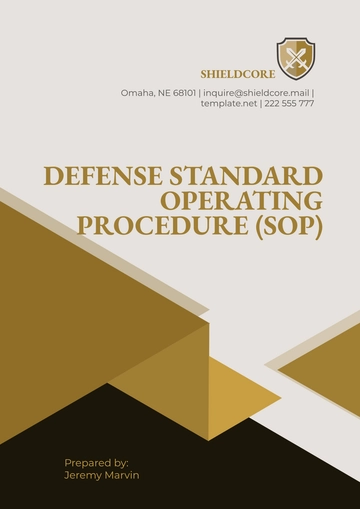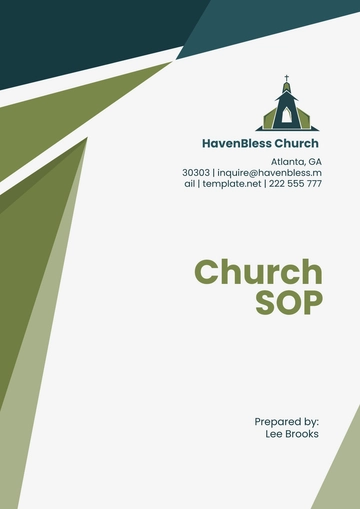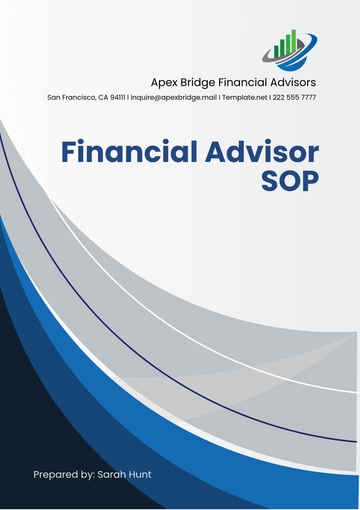Free Travel Agency Finance SOP
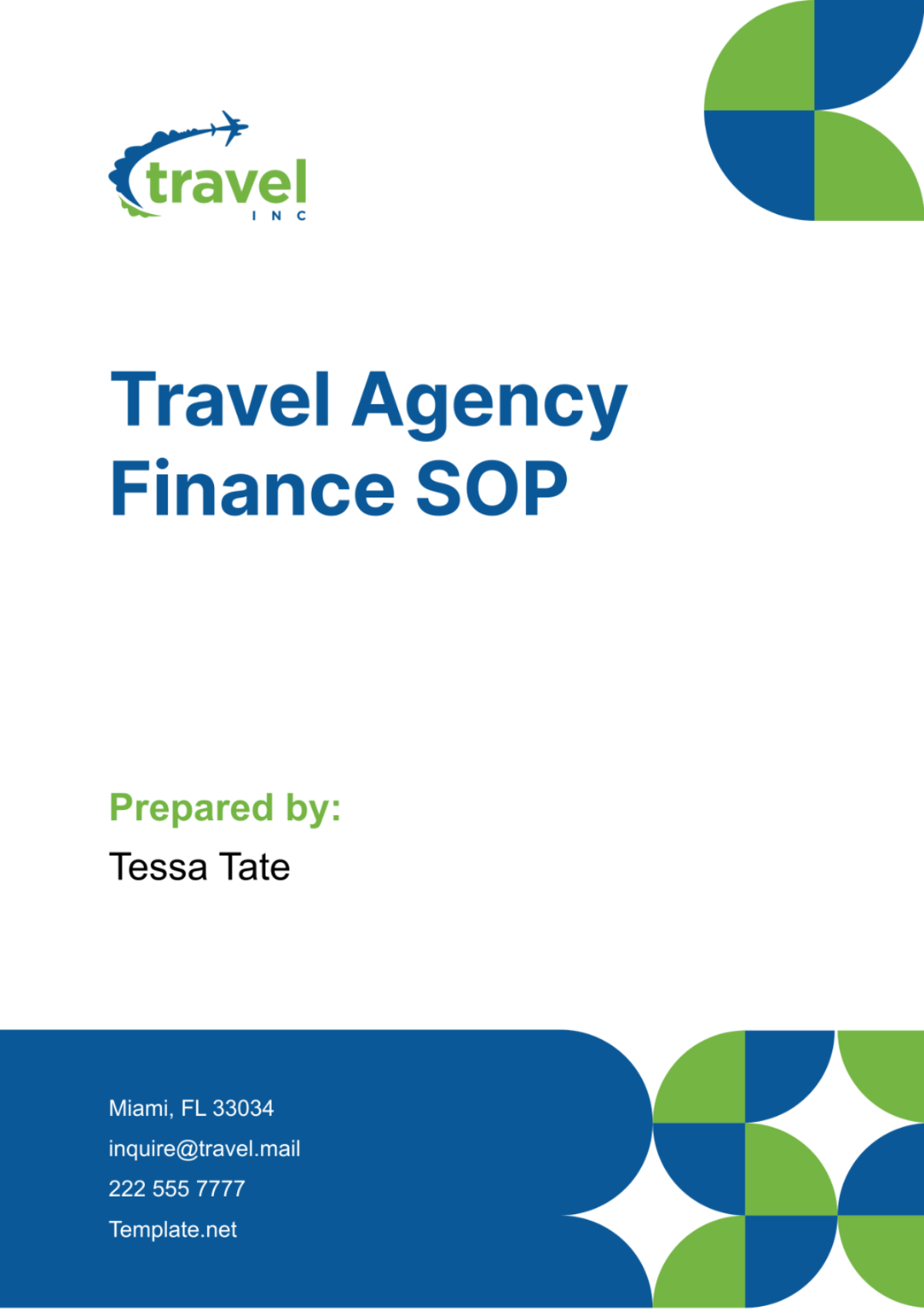
I. Introduction
A. Purpose
The purpose of this Standard Operating Procedure (SOP) is to provide comprehensive guidelines for managing the financial operations within our organization. It aims to ensure accuracy, consistency, and compliance in all financial transactions and reporting, thereby supporting our mission to deliver outstanding travel services while maintaining financial health and sustainability.
B. Scope
This SOP covers all financial activities related to our operations, including planning, transactions, reporting, audits, and compliance. It applies to all employees involved in financial processes at any level, ensuring that everyone adheres to the same standards and practices.
C. Responsibility
The responsibility for implementing this SOP rests primarily with our Finance Department. However, all department heads are accountable for ensuring that their teams are informed about and comply with these procedures. The Finance Manager is specifically responsible for the regular review and updating of this SOP to reflect any changes in financial legislation or our internal processes.
II. Financial Planning
A. Budgeting
Budgeting is a critical component of our financial planning, providing a framework for what we expect to spend and earn over a specific period, typically one fiscal year. It ensures that resources are allocated efficiently and strategically to support business objectives.
Begin with reviewing previous budgets and actual expenditures.
Estimate revenues based on past performance and market conditions.
Distribute resources among departments according to strategic priorities.
The proposed budget must be approved by senior management.
Regularly compare actual spending against the budget and adjust as necessary.
B. Financial Forecasting
Financial forecasting allows us to predict future financial conditions based on current and historical data. This process helps in making informed business decisions and in strategic planning.
Gather data from internal sources and insights from market trends.
Use statistical tools and software to analyze data and identify patterns.
Create financial models to project future revenues and expenses.
Regularly update forecasts to reflect new financial and economic conditions.
Use forecasts to guide financial strategy and policy decisions.
III. Financial Operations
A. Accounting Procedures
Our accounting procedures are designed to ensure all financial transactions are recorded accurately and in compliance with applicable accounting standards. These procedures help maintain the integrity of our financial statements and support effective financial management.
Ensure all financial documents are properly dated, signed, and recorded.
Record transactions in the appropriate accounts and ledgers promptly.
Regularly reconcile bank statements with our internal records.
Prepare monthly, quarterly, and annual financial reports.
Maintain readiness for internal and external audits by organizing documents and supporting materials.
B. Cash Handling
Proper cash handling is crucial for maintaining accurate financial records and preventing fraud. Our procedures are designed to secure the handling of cash from receipt to deposit.
Issue receipts for all cash received.
Secure cash in a locked safe until deposit.
Make regular deposits to minimize the amount of cash on hand.
Maintain detailed records of all cash transactions.
Perform surprise cash counts to ensure compliance with procedures.
C. Expense Management
Managing expenses effectively is essential to our financial health. Our guidelines ensure that spending is aligned with our business objectives and financial capabilities.
Require pre-approval for all expenditures above a specified threshold.
Set clear spending limits for different categories and departments.
Insist on receipts or documentation for every expenditure.
Regularly review expense reports and require managerial approval.
Adhere to our expense policy, updating it as necessary to reflect changes in our business environment or fiscal strategy.
IV. Revenue Management
A. Pricing Strategies
Our pricing strategies are designed to optimize revenue while remaining competitive in the market. We employ various pricing models based on the type of travel services offered.
Service Type | Pricing Model |
|---|---|
Standard Travel Pack | Fixed Rate |
Customized Journeys | Dynamic Pricing |
Group Discounts | Tiered Pricing |
Last-Minute Deals | Promotional Discounts |
B. Revenue Recognition
Accurate revenue recognition is crucial for financial reporting and compliance. We adhere to established standards for recognizing revenue from different sources.
Revenue Source | Recognition Standard |
|---|---|
Booking Deposits | Recognize as revenue upon service completion |
Cancellation Fees | Recognize upon cancellation confirmation |
Service Charges | Recognize as earned |
Gift Certificates | Recognize upon redemption |
VI. Payroll Compensation
A. Salary Administration
Our salary administration procedures ensure that all employees are compensated fairly and on time, according to their roles and responsibilities. These procedures support compliance with labor laws and help maintain employee satisfaction and motivation.
Process payroll on a bi-weekly basis, ensuring accuracy in hours worked.
Handle promotions, demotions, and other status changes promptly to reflect in the payroll cycle immediately following the change.
Accurately apply statutory and voluntary deductions, including taxes, benefits, and retirement contributions.
Maintain up-to-date payroll records for all employees to support audits.
Ensure the confidentiality of payroll information through secure processing and storage systems.
B. Bonuses and Incentives
Bonuses and incentives are crucial for motivating our team and rewarding performance that exceeds expectations. Our policies are designed to be fair, transparent, and aligned with our strategic goals.
Base bonuses on performance evaluations conducted semi-annually.
Clearly define eligibility criteria for each type of bonus or incentive.
Allow for discretionary bonuses for extraordinary accomplishments.
Implement a profit-sharing plan that distributes a portion of annual profits based on company performance.
Maintain non-monetary recognition programs to reward outstanding service or innovation.
VII. Financial Reporting
A. Internal Reports
Internal financial reports are crucial for maintaining operational transparency and enabling informed decision-making. These reports are prepared monthly, quarterly, and annually.
Monthly: Include detailed accounts of cash flow, expenses, and revenue.
Quarterly: Expand with performance analysis against the budget.
Annual: Provide a comprehensive review of the financial year, including comparisons to previous years and industry benchmarks.
B. External Reporting
External reporting is guided by compliance with regulatory requirements, particularly in the U.S., to ensure transparency and accountability to external stakeholders.
Tax Filings: Prepare and file federal, state, and local tax returns annually.
SEC Filings: For publicly traded entities, comply with all SEC filing requirements including quarterly and annual reports.
State Reports: Comply with specific state requirements for financial reporting and disclosures.
Audit Reports: Prepare for and facilitate external audits, ensuring that all necessary financial statements and documents are available and accurate.
Regulatory Compliance: Stay updated on changes in financial reporting standards and regulations to ensure ongoing compliance.
VII. Audit and Compliance
A. Internal Audit
Internal audits are critical for ensuring that our financial practices comply with our internal policies and external legal requirements. These audits help identify any discrepancies or areas for improvement.
Audit Area | Frequency |
|---|---|
Financial Reporting | Annually |
Operational Audits | Bi-annually |
Compliance Audits | Annually |
IT and Security | Quarterly |
B. Regulatory Compliance
Our agency remains vigilant in complying with all applicable U.S. laws to safeguard our operations and protect our clients' interests. Key regulations include:
Sarbanes-Oxley Act (SOX): Ensures the accuracy and transparency of financial disclosures.
Dodd-Frank Act: Implements comprehensive financial reform to reduce risks and increase transparency.
Fair Labor Standards Act (FLSA): Governs employment law concerning overtime, minimum wage, and other employment standards.
Internal Revenue Code (IRC): Provides all tax laws, including those pertaining to business operations.
C. Risk Management
Effective risk management is crucial for minimizing potential financial and operational disruptions.
Risk | Likelihood | Impact |
|---|---|---|
Economic Downturn | Medium | High |
Regulatory Changes | Low | High |
Technological Failures | High | Medium |
Fraudulent Activities | Low | High |
To address these risks, we implement stringent controls, including regular monitoring, updating our risk management strategies, and conducting training to enhance awareness and preparedness among our staff.
VIII. Training and Development
Training and development are pivotal in ensuring that our employees are proficient in their roles and up-to-date with industry standards and regulations.
Program | Frequency | Duration |
|---|---|---|
New Employee Orientation | As needed | 2 Days |
Financial Software Training | Annually | 1 Day |
Compliance Update Sessions | Bi-annually | Half-Day |
Leadership Development | Quarterly | 2 Days |
Continual improvement is supported by encouraging feedback from staff on training effectiveness and adapting our programs to meet evolving business needs and regulatory requirements.
IX. Revision History
Date | Version | Summary of Changes |
|---|---|---|
1.0 | Initial creation of the SOP. | |
1.1 | Updated compliance sections and audit schedules. |
- 100% Customizable, free editor
- Access 1 Million+ Templates, photo’s & graphics
- Download or share as a template
- Click and replace photos, graphics, text, backgrounds
- Resize, crop, AI write & more
- Access advanced editor
Discover the Travel Agency Finance SOP Template on Template.net, providing an editable and customizable guide for standard operating procedures. Crafted for efficiency, this template is effortlessly editable in our AI Editor tool, enabling you to streamline financial processes with precision.




